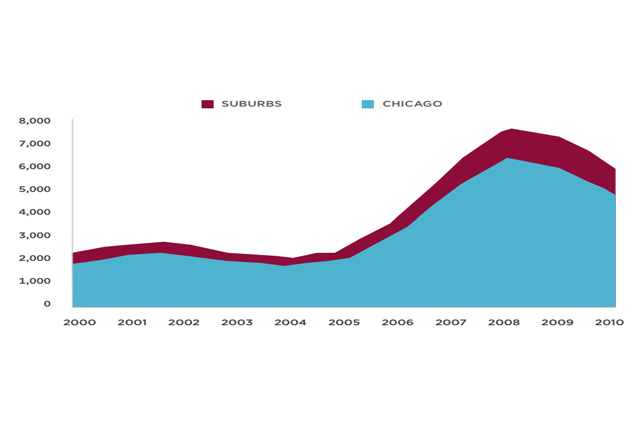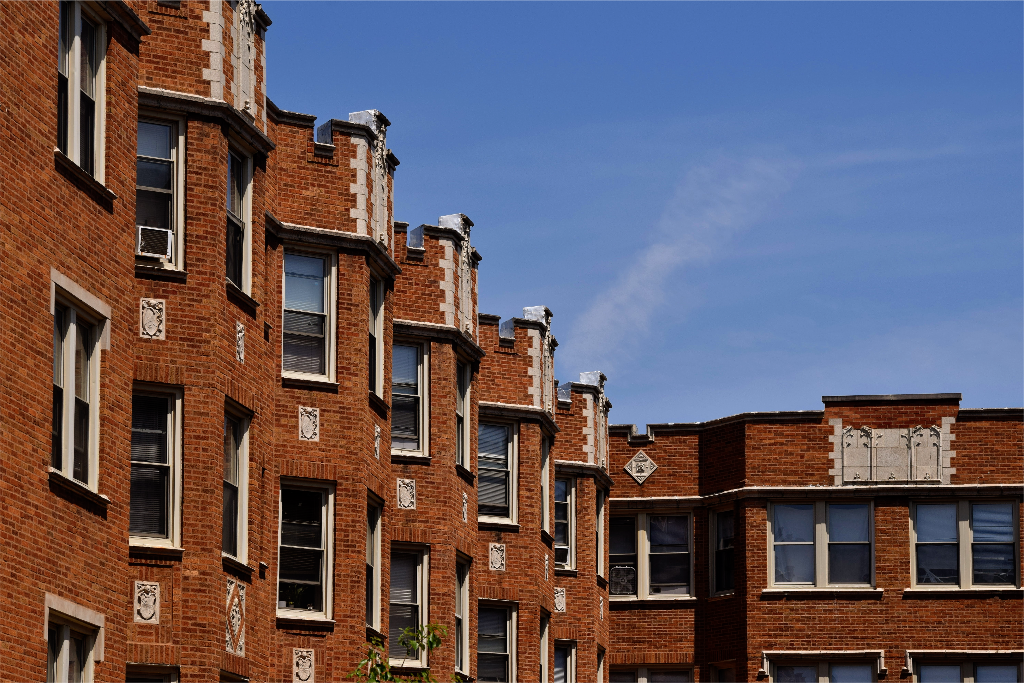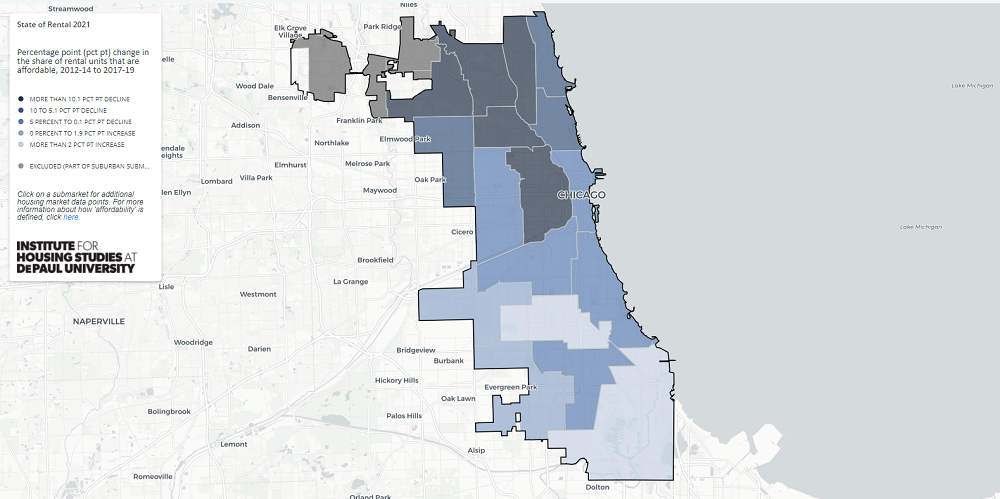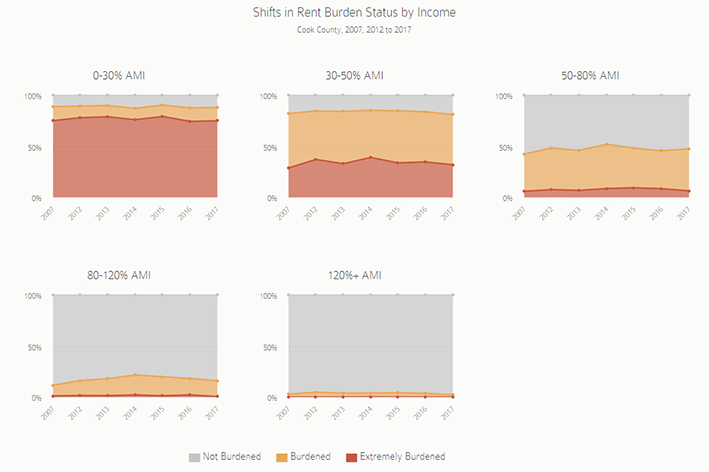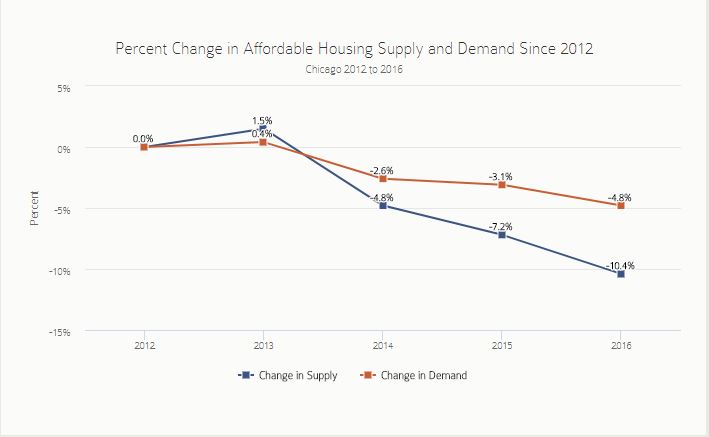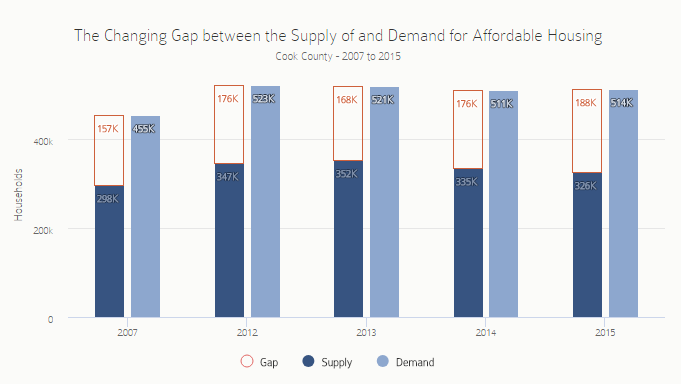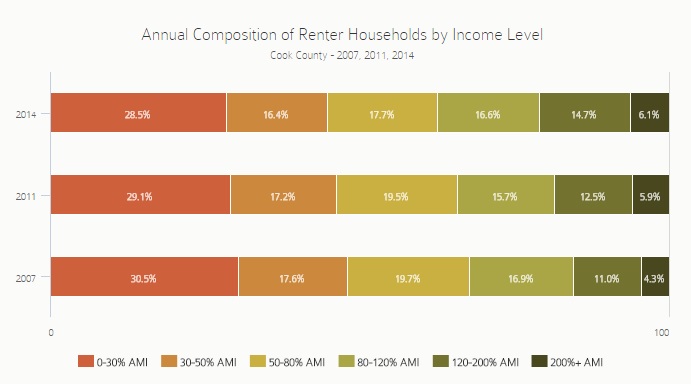Four in ten Cook County residents are renters, yet to date much of the discussion about the housing crisis has focused on its effects on current and potential homeowners. This report examines how changes in the housing market over the last decade have affected renters and, in particular, access to affordable rental housing in Cook County.
There has long been a shortage of affordable rental housing in the United States. During the first part of the last decade that shortage worsened as low interest rates, a strong national economy, and a continuing public policy push to increase homeownership effectively re-allocated investment resources into owner-occupied properties and away from rental housing. Demand for owner-occupied units led many owners of rental properties to convert rental units into for-sale condominiums, and there was relatively little new multifamily rental housing construction to make up for the loss of those units.
At the same time that the supply of affordable rental housing was decreasing, the demand for affordable rental opportunities increased. The widespread recession of 2008 and 2009 negatively affected wages and employment and resulted in a growing proportion of very low-income renters.
These national trends were mirrored in Cook County over the last decade. Key findings from this report include:
-
- The affordable rental housing supply is not keeping pace with demand. In 2009 there was a shortage of 180,000 affordable rental units in the County, an increase of 9.1 percent since 2005.
- In 2010, households needed to make approximately $40,000 per year to afford the county’s median priced two-bedroom apartment ($1000 per month), if they were to pay 30 percent of their income toward housing.
- The affordable rental housing shortage is having its greatest effect on less affluent renters. More than three-quarters of households making less than $35,000 per year pay more than 30 percent of their income for rent.
- Over the last half of the 2000s, rents increased. Although between 2008 and 2010, rents in Chicago decreased by 1.9 percent and rents in suburban Cook County decreased by 4.3 percent, the County has still seen a net increase in rents since 2005. Real median rents rose 14.1 percent in Chicago and 13.3 percent in the suburbs between 2005 and 2010.
- The foreclosure crisis has affected renters. More than 97,000 units in multifamily buildings in Cook County have been part of a foreclosure action.
- The gap between affordable rental housing supply and demand likely going to grow larger. Taking into account likely demographic changes, household tenure decisions, regional economic conditions, and new construction, the gap in affordable rental units will increase to 233,000 by 2020.
